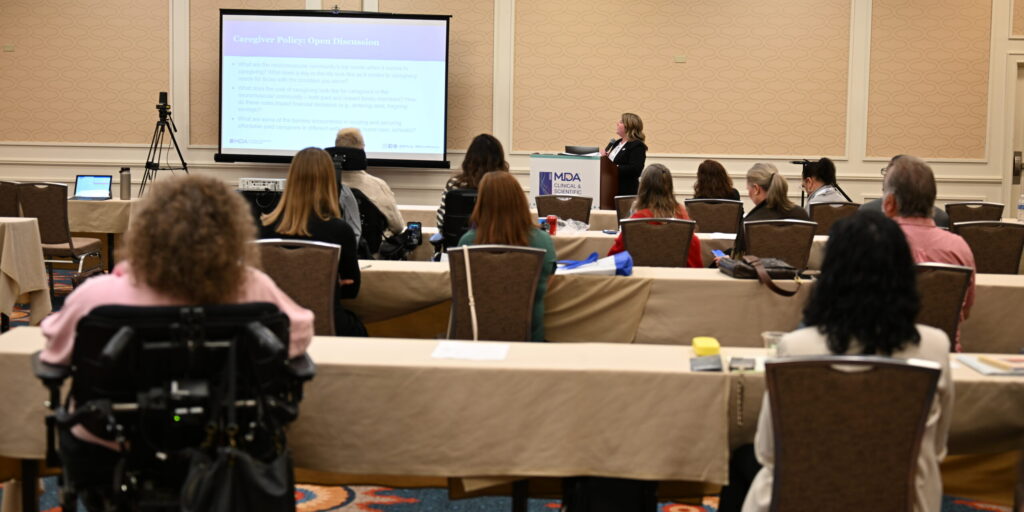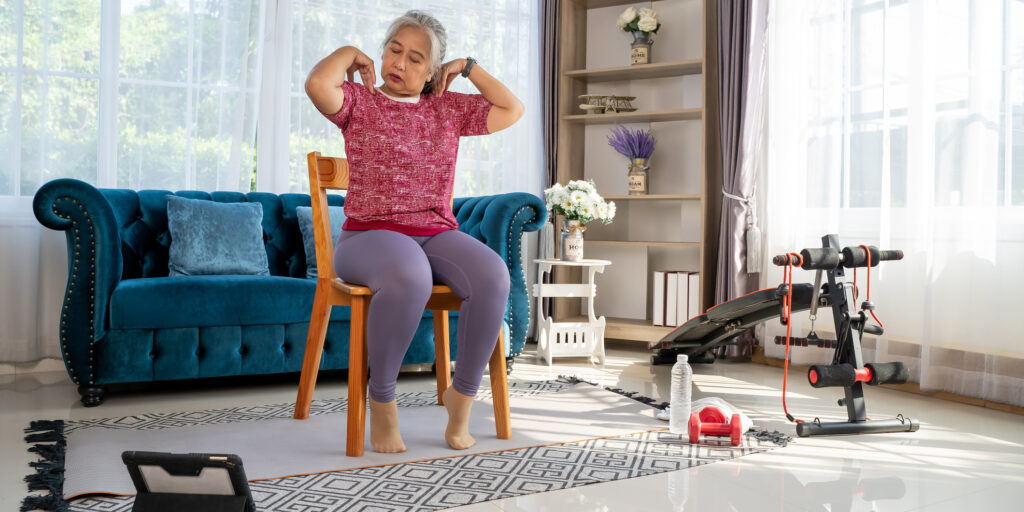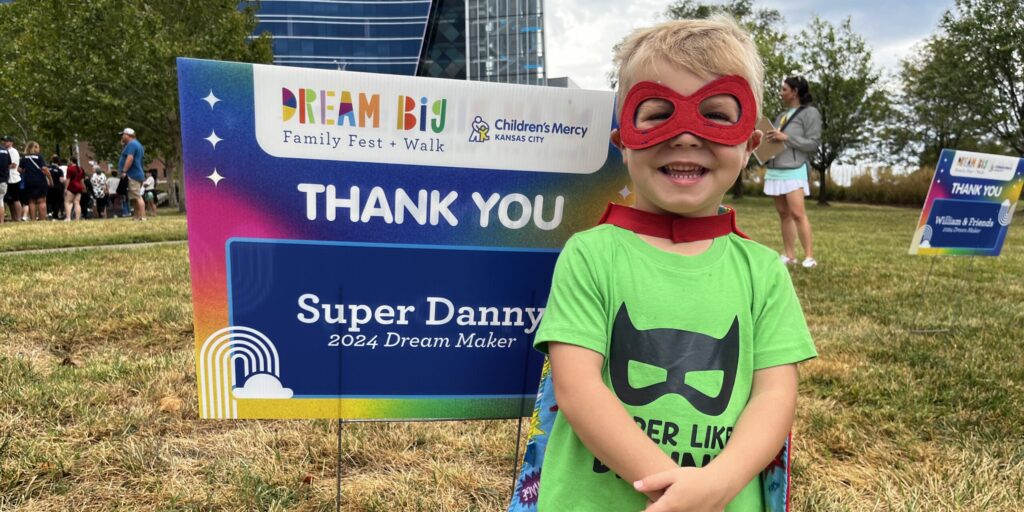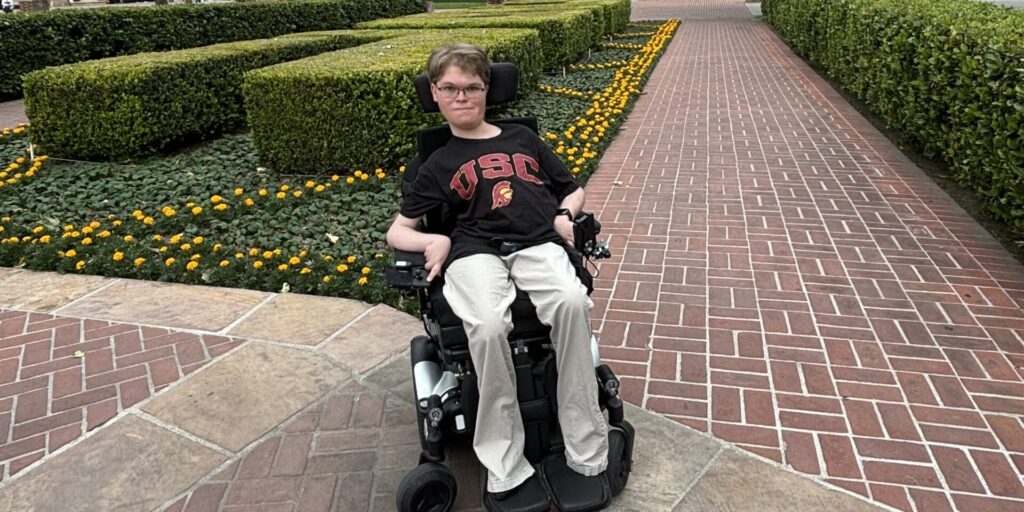
MDA Ambassador Guest Blog: How Assistive Technology Makes Learning More Independent
By August Johnson | Friday, July 19, 2024
5 Second Summary
MDA Ambassadors play an essential role in furthering MDA’s mission while representing and empowering the neuromuscular disease community. Quest Ambassador Guest Blog series provides a platform to share their personal stories, perspectives, and experience.
Read more personal stories from members of the neuromuscular community about their College Experience as they share their journey, accomplishments, advice for accommodations and overcoming barriers, and insights into navigating college life with a disability.
August Johnson, more commonly known as A.J., was diagnosed with spinal muscular atrophy (SMA) when he was nine months old. He recently graduated from high school and will be attending the University of Southern California to study Computer Engineering and Computer Science.
My first day of high school, which took place in the middle of the COVID-19 pandemic, was undoubtedly filled with dread. It wasn’t that I hated the idea of classes being held online, but I was stressed that virtual school meant all of the physical requirements of learning were suddenly solely up to me.
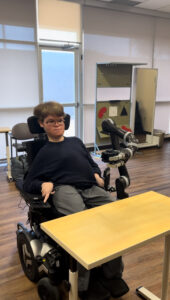
August Johnson trying out the Jaco Arm.
Like many students with a neuromuscular disease, I utilized a paraeducator or nurse to help me throughout the school day. They would take notes for me, get items out of my bag, and feed me during lunch. However, the social distancing rules and online classes made this “luxury” impossible. Because of this, I started to look into assistive technology to give myself more independence and make learning easier.
What most students with disabilities don’t realize is assistive technology can be essentially anything that makes their lives easier. It’s not just limited to software and devices specifically targeted for disabilities. For example, I have difficulty using a standard mouse to control a computer, so I got an accommodation to use a trackpad instead. Trackpads were not designed to help people with limited motor function. However, because it made completing my schoolwork easier, it was approved as an assistive technology device on my IEP. In fact, almost all assistive technology I’ve used is not actually designed with the intent to be “assistive technology.” Sadly, there aren’t many companies that create devices and software to help students with disabilities. Also, every disability is unique, and even people with the same disability can have dramatically different needs. So, creating devices and software with a large enough market to be profitable can be challenging.
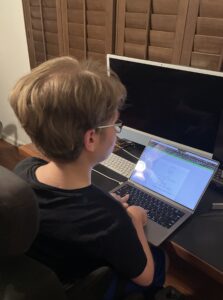
August Johnson using the assistive technology program, Mathcha, to complete homework.
The uniqueness of every individual’s needs is also why Google Search is my best friend when finding assistive technology. It enables me to find devices and software that directly meet my requirements. By simply looking up “Math equation writer,” I found one of my most used assistive technologies, Mathcha, a math equation editor to write out my work digitally. Compared to other equation editors recommended for students, like Equatio, Mathcha is the best solution for me because of its speed and immense options for notation. However, Equatio could be a better option for someone who needs speech-to-text functionality. Self-research is also not the only way to find assistive technology options; most schools have an Assistive Technology Specialist. These specialists can offer advice and resources, but when it comes to individual needs, sometimes you need to figure out what works best for you.
Another way I accessed assistive technology that met my needs was by creating them myself. Learning to code is one of the most indispensable tools I have found for students with disabilities – it empowers us to customize and develop solutions tailored to our unique challenges. If you find a program that almost meets your needs, you can create a script to add the missing functionality. I did this with Mathcha. As I used this program more for my school assignments, I realized that it would be much easier to use if it had more hotkeys, so I created a script in Python to add this functionality. If you are interested in learning to code, I recommend starting with Python. Python is one of the simplest coding languages and is extremely easy to use for interacting with a computer.
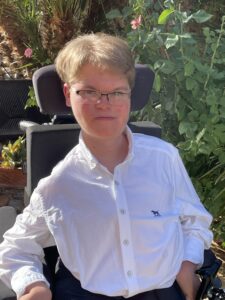
August Johnson getting ready for graduation.
Throughout my four years of high school, I primarily used software as to help me during the school day, such as Mathcha and custom Python scripts. However, I also used the Drop ALT V2 keyboard with Gateron Clear switches. These switches are far easier to press than those on a standard keyboard, which was particularly beneficial when I was extremely fatigued. Luckily, I rarely need to use it anymore, but it is always an option.
However, as I prepare for college, I’m quickly realizing that assistive technology is not as straightforward to obtain. There can be an immense amount of bureaucracy to go through. For students who need specialized options, like me, there is an increased need for documentation and justification. For this reason, high school students need to ensure their IEP or 504 plan directly states the required assistive technology and its justification so that there will be proof of its use when they head off to college.
Assistive technology is a great way to gain more independence. It has empowered me to be at the top of my high school class, and I’m incredibly grateful that it also exposed me to coding. After high school, I will be attending the University of Southern California to study Computer Engineering and Computer Science, so hopefully, I can create my own assistive technology company.
Next Steps and Useful Resources
- For more information about the signs and symptoms of Spinal Muscular Atrophy (SMA), as well an overview of diagnosis and treatment concerns, an in-depth review can be found here.
- To learn more about MDA’s Young Adult Programs, visit here.
- MDA’s Resource Center provides support, guidance, and resources for patients and families. Contact the MDA Resource Center at 1-833-ASK-MDA1 or ResourceCenter@mdausa.org
- Stay up-to-date on Quest content! Subscribe to Quest Magazine and Newsletter.
TAGS: Ambassador Guest Blog, Ambassadors, College Experience, Education, Young Adults
TYPE: Blog Post
Disclaimer: No content on this site should ever be used as a substitute for direct medical advice from your doctor or other qualified clinician.


